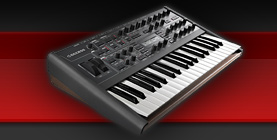

|
|||||||
| General discussion about Access Virus Discussion about Virus A, B, C and TI. |
 |
|
|
Thread Tools | Search this Thread | Display Modes |
|
|
|
#1
|
||||
|
||||
|
I can't uderstand the concept of ROM and RAM for Access Music.
Is strange how is most easy overwrite the ROM (Read Only Memory) area than the RAM (Random Access Memory) area. I don't know anymore what is right nowadays, maybe my concepts that are too much outdated... Well the real question is: How can I write a whole bank in RAM area? What's the best (smart) way that you use to manage ROM and RAM, organizing and selecting the best patches to Access Virus Ti. My Virus is the Snow one. thanks for the help |
|
#2
|
||||
|
||||
|
ROM is Read Only Memory. You can't write bits and bobs of data to it, it's read-only. It's used for the operating system. If it's Flash ROM it can be updated, but it has to update the whole area of memory, not just a little bit of it. Flash ROM has only a certain limited amount of times it can be 'flashed' (may it be a thousand or so times). Useful enough for flashing entire operating systems or whole banks of sounds, but not for flashing individual patches all the time.
RAM is Random Access Memory. This type of memory is volatile - in other words it's temporary. As soon as you switch off the synth, everything held in RAM is lost. However if there's a backup battery then this helps retain the data in the memory until you switch the synth on again. Think I mis-read the question, sorry. I know on my old Indigo you can flash one of the ROM banks with new patches en-masse if you wanted. But you only have individual patch edit capability on the first two (RAM) banks, and this data is held in place by the backup battery (shown on the bottom left of the blue dashed Mainboard box - it's a standard flat, round CR2032 battery - the size of a coin). You can't edit individual patches on the ROM banks - you have to flash them instead. Maybe they don't allow more RAM banks as it would drain too much current from the battery? I'm unsure as to this.
__________________
PS > And another thing! Will the Ti|3 have user customisable/importable wavetables? |
|
#3
|
||||
|
||||
|
Oh nice explanation about ROM and RAM Timo!
I've solved my problem this way: To write whole RAM banks I go to the VC, load a bank in the browser slot at the bottom, select all the patches holding SHIFT (first to the last) and so I drag all to the RAM area selected in above slot of the browser. Simple, but this is not in the "manual", so you have to lost some hours learning by yourself... The manual say something about how to cook a Virus Snow in the oven... really stupid |
|
#4
|
|||
|
|||
|
Can someone please tell me this..
How do I browse through the categories of the entire patch collection on the synth itself. In virus control, I might for example select "bass" as a category and I'll then get about 11 pages of bass patches which are spread across all the banks. I then want to be able to click a button on the virus to go through them one by one rather than reaching for the mous everytime. But when I do it on the virus, it just goes through the bass patches in ram a then ram b, it doesnt follow the list in Virus control. I hope this makes sense. Please help Cheers |
 |
«
Previous Thread
|
Next Thread
»
| Thread Tools | Search this Thread |
| Display Modes | |
|
|
All times are GMT. The time now is 03:55 AM.
Powered by vBulletin® Version 3.6.4
Copyright ©2000 - 2025, Jelsoft Enterprises Ltd.
Skin Designed by: Talk vBulletin
Copyright ©2000 - 2025, Jelsoft Enterprises Ltd.
Skin Designed by: Talk vBulletin
Copyright ©2002-2022, Infekted.org
 |
 |








 Hybrid Mode
Hybrid Mode
